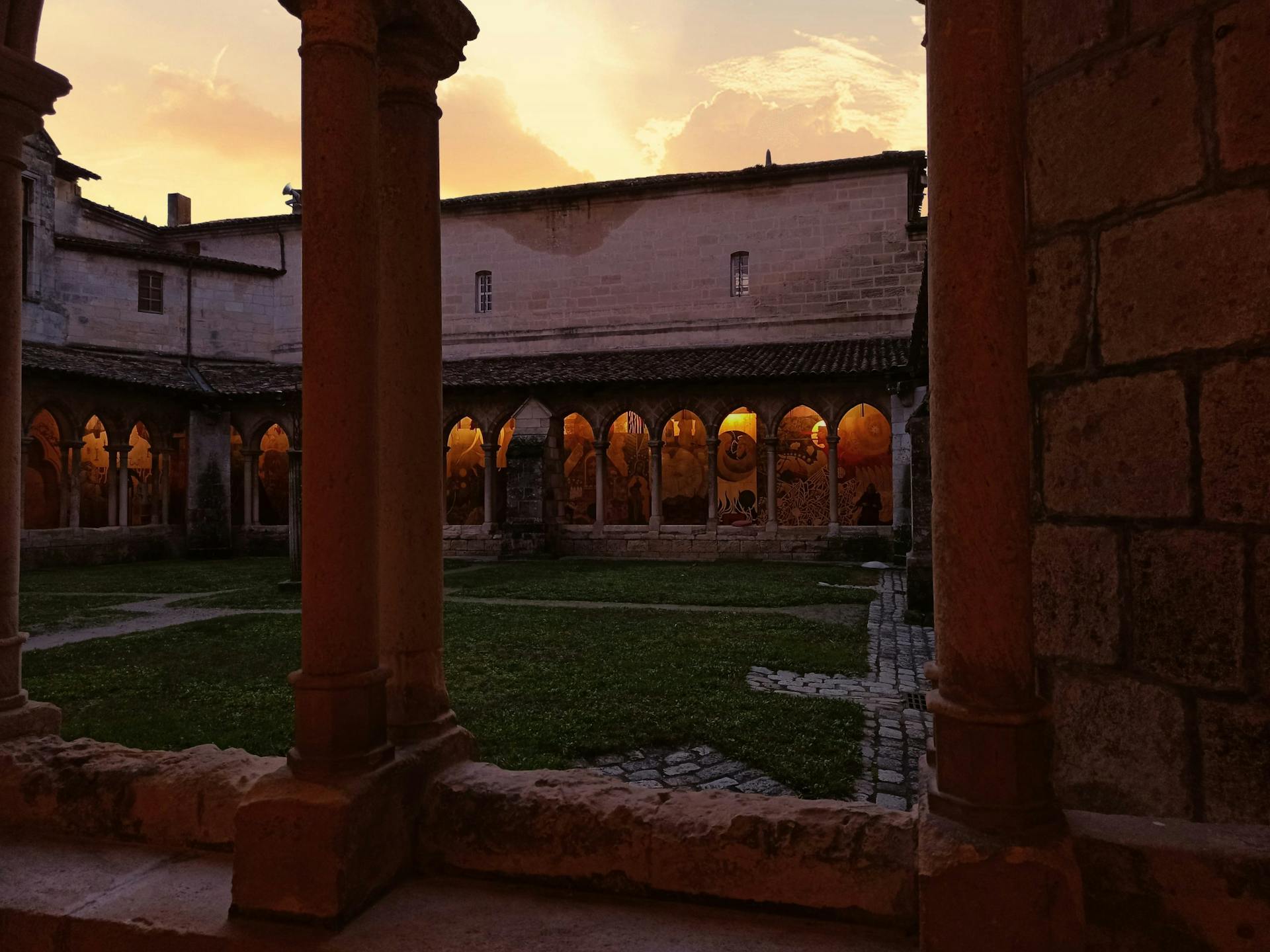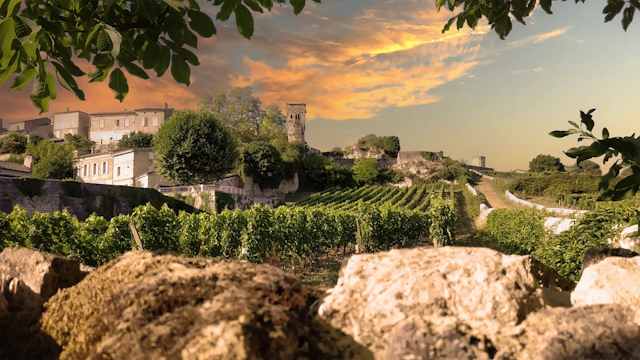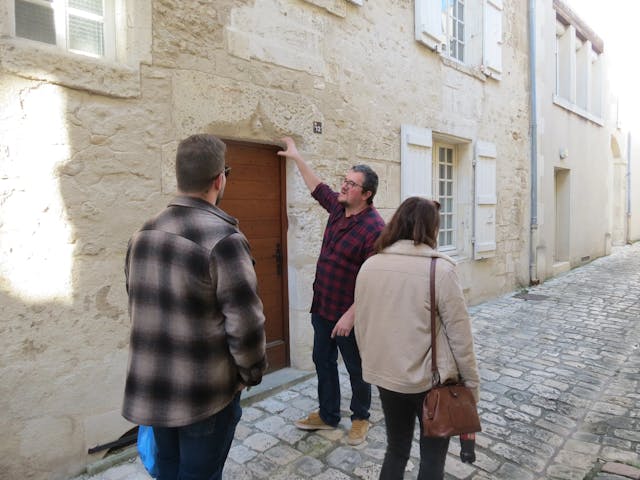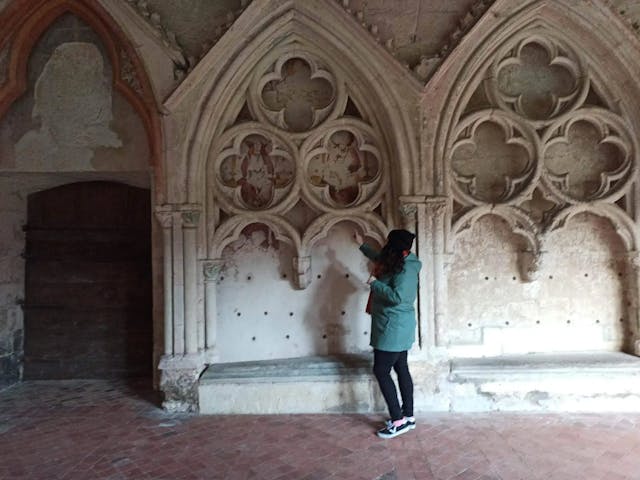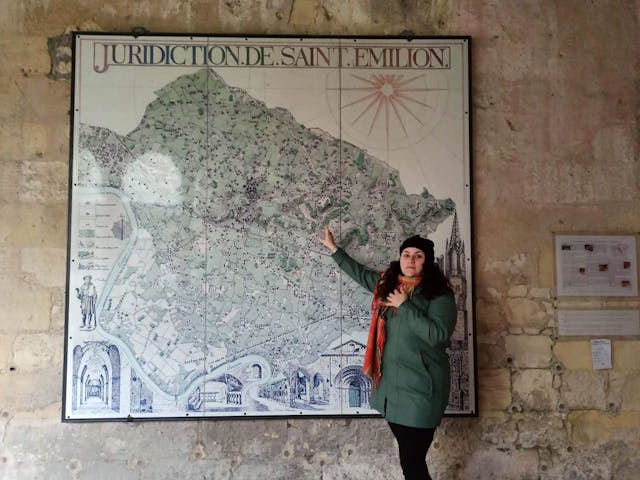There’s a reason why people visit Saint-Emilion and think it is worth visiting. And it’s not just about the obvious reason…
It all started around 30 million years ago when the vast ocean covering this land retracted. The sediments and marine life left behind by the salty water formed a massive Asteria limestone plateau that dominates the Dordogne valley (the name comes from the starfish.)
Saint Emilion is located on the right bank of the river, about a 50-minute car ride away from Bordeaux or 35 min by train (you can read our article on How to Get to Saint-Emilion). Saint Emilion benefits from its microclimate (hot, dry summers and rainfall throughout the year.) This allows the grapes here to ripen gradually and in combination with the soil produce outstanding wines. And many, many, people come here for that (more than 1 million visitors a year!)… But is it truly worth visiting Saint-Emilion? Even if you don’t like wine?
Most people visit Saint-Emilion because of the wine, but the medieval city has a very long history

In addition to its wine-making history, it is worth visiting Saint-Émilion just for its beautiful medieval architecture and rich cultural heritage. The town is home to many historic buildings, most notably the Monolithic Church
Even though the city of Saint Emilion was non-existent before the 8th century, the area around Saint Emilion bears evidence of life dating back to 14.000 years ago. Celtic tribes and later Romans also left traces of their existence around. In the 8th century, a benedictine monk named Emilion came here (for reasons unknown) and settled in one of the many natural caves of the limestone plateau, becoming the local hermit. Soon the miracles performed by this humble monk from Britain attracted more people to the area. This is when the seed of the tree that will become the city is sowed.
However, it was not until the 12th century that Saint Emilion became a city of big historical, religious and commercial importance. Nestled between the two main roads that lead to Galicia in Spain, Saint Emilion became a secondary road leading to the pilgrimage of St James. The locals decided to start creating a never-seen-before (in Europe) architectural feat: the monolithic church of Saint Emilion, which is still today the largest underground medieval church in Europe. It ensured that the pilgrims’ detour would not be unjustified.
This church is actually still open (and it is well worth visiting), but you do need to get a guide to enter. So you either can book our private City & Underground Tour or with a public group (with 35 other people) with the Tourist Office (costs 15€/adult – you can book online or enquire directly at their reception desk).
Many monasteries were also built here the follow-up of the Monolithic Church, during the Middle Ages and many religious communities settled inside and around the city walls. They all got looted during the French Revolution in 1793, the monks were expelled and the monasteries’ buildings were sold at auction. Some of them, like the Cordeliers Cloister, or the Couvent des Jacobins got turned into… wineries!
Who would have guessed?
Saint Emilion has a rich and diverse history worth exploring in detail. If you want to know more about what to visit in Saint Emilion, check out our Free self-guided tour in Saint-Emilion article!
Visit Saint-Emilion as a world-renowned vineyard

The first vineyards were planted here by the Romans around the 3rd century AD. However, it wasn’t until the 8th century that the town of Saint-Émilion began to develop as a centre of wine production. The monks began making wine and over time, the town became renowned for the alcoholic red drink, that we exported in bulk to England.
Nowadays, the wines produced in the Saint-Émilion region are only red and from a blend of grapes – a majority of Merlot, more than often mixed with Cabernet Franc and Cabernet Sauvignon (and you can anecdotally find some Malbec, Carmenère and Petit Verdot here and there, around 1% of the vineyard). And they have to be aged in barrels for a least 12 months to be qualified as a Grand Cru (just some fancy French words to say it’s the Good Stuff).
The wines are known for their full-bodied soft velvety flavour, with notes of black fruit, spice, and earth. The combination of soil types (between clay, limestone and sand), climate, topography, and human knowledge plays a significant role in the flavour, quality and reputation of the wines. And these things are what the French call the Terroir. Saint Emilion is known for producing some of the most outstanding red wines worldwide.
And if you’re into wine, one of the best moments to visit Saint-Emilion is during the harvest season (between September and October). You can witness the winemaking process and even participate in it yourself at curtain wineries. There are more than 1000 chateaux outside the city walls, most of which propose guided visits and tastings with or without reservation. The local tourist office even offers a selection every day of chateaux that are actually open to help you out!
Visit Saint-Emilion for the food
In Saint Emilion, you can also find several Michelin-starred restaurants
Logis de la Cadène – modern cooking – 1-star MICHELIN
20223 place du Marché-au-Bois, 33330 Saint-Emilion
Website: https://www.logisdelacadene.fr/
Les Belles Perdrix de Troplong Mondot – 1-star MICHELIN 2022
Lieu-dit Troplong-Mondot, 33330 Saint-Emilion
Website: https://www.troplong-mondot.com/hospitality/les-belles-perdrix/
La Table de Pavie – 2-stars MICHELIN 2022
5 place du Clocher, 33330 Saint-Emilion
But also some non-starred restaurants including our long-time favourite:
Le Tertre
An excellent spot, family-owned. They don’t have many seats, so you need to book (online) a couple of days ahead (you likely won’t get a spot if you just go knock on the door)
5, rue du tertre de la tente, 33330 Saint-Emilion
https://restaurantletertre.com/
In conclusion, we have a thousand-year-old city that kept its medieval charms, surrounded by some of the best vineyards in the world and delicious food… A true jewel made of stones in a sea of vines.
So not only is it worth visiting Saint-Emilion, but it’s a true must-do if you come to Bordeaux, and you absolutely need to come here for a day, even if you’re not into wine.
And if you don’t want to explore it alone we also offer high-quality private guided tours to explore the city with a true local!
